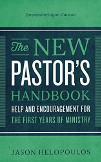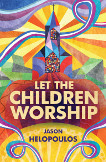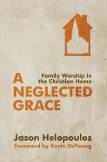
The Serpent on the Pole and the Cross of Christ
When Jesus explained the nature of His atoning death on the cross to the Israelites of His day, He appealed to what is arguably the most fascinating of the redemptive symbols from the history of Israel's wilderness wandering--namely, the bronze serpent on the pole (Numbers 21:4-9; John 3:14). The bronze serpent is the clearest type of the saving work of Jesus at Calvary. Of all the types and shadows, there was not any that showed forth the principal work of the Savior better than this type. Jesus could have pointed to the passover, or to any of the sacrificial types that foreshadowed His atoning death, but He chose to point to this type in his discussion with Nicodemus. Here are 14 points drawn from John Brinsely's The Mystical Brazen Serpent with the Magnetical Virtue Therefore, or Christ Exalted Upon the Cross, Tim Keller's sermon "Moses and the Bronze Serpent" and Robert Murray M'Cheyne's Brief Exposition of the Epistles to the Seven Churches in Asia that are meant to teach us how the account of Numbers 21:4-9 serves to deepen our understanding of the Gospel:
1. The bronze serpent was God’s means of salvation for the Israelites who were bitten by the serpents in the wilderness. Jesus Christ crucified is God’s means of salvation for everyone who has been bitten by the deadly venom of sin in the wilderness of this fallen world.
2. The bronze serpent was God’s only way of salvation for the Israelites. Jesus Christ crucified is God’s only way of salvation for Jew and Gentile (consider the redemptive-historical reading of John 3:16 in light of John 3:15. In the OT the Israelites were loved by God and so given a typological way of healing; in the New Testament we are told that "God loves the world," that is, Jews and Gentiles, as so gave His Son for the redemption of His people from every tongue, tribe, nation and language).
3. The bronze serpent was a visual representation of the wrath of God against a grumbling and complaining people. Christ crucified is a visual representation of the wrath of God against all ungodliness and unrighteousness of men.
4. The bronze serpent represented the propitiation of the wrath of God. Whoever looked at the serpent would know that the wrath of God was turned away. The cross of Christ displays the wrath of God as well as the turning away of that wrath. Mercy and truth meet together at the cross; righteousness and peace kiss one another in the death of Jesus.
5. The bronze serpent was a symbolic representation of the venomous serpents that bit the people and brought deadly consequences on account of their sin; however, it was without the venom that caused their death. Christ represented those who were ruined by sin, taking to Himself a body in the likeness of sinful flesh–yet without sin–so that He might, through His death, save those who by their own sin were poisoned unto death. He was made a curse for us that we might receive the blessings of God.
6. The bronze serpent was meant to remind the Israelites of the cause of their sin. It was meant to carry their minds back to the Garden of Eden where Satan came in the form of a serpent to tempt their first parents. The punishment for the sin, brought into the world through the temptation of that Serpent of Old, was laid on Jesus at the cross. The penalty for our sin fell on Him. He became sin for us, that we might become the righteousness of God in Him.
7. With respect to the serpent in the wilderness, the healing was dependent upon the word of God concerning His means of salvation. With Christ crucified, salvation is dependent on God’s word concerning His means of that salvation.
8. As the poisoned Israelites were called to believe God’s command--and the bronze serpent was made the object of that command--we see that both the means and the instrument of God’s salvation are typified. In the account of Jesus’ interaction with Nicodemus both the means and the instrument of God’s salvation are pointed out. A crucified Savior is the means of God’s salvation. Faith (or looking to Him) is the instrument of salvation.
9. The plagued Israelites were externally called to look upon the bronze serpent in order to be healed. Sinners are externally called to look upon the crucified Son of God to be saved.
10. The serpent was lifted up before the Israelites in the midst of the camp so that those who were bitten might look and be healed. Christ was lifted up–first on the cross, then in His resurrection, then in His ascension, and finally in the preaching of the Gospel–so that sinners might look on Him and be saved.
11. The bronze serpent was the central and all sufficient means of healing for the Israelites. The cross is the central and all-sufficient means of the saving work of Christ for the healing of all who believe in Him.
12. Just as God chose a man, Moses, to lift up the bronze serpent on the pole so that men might look and be healed, God has chosen ministers to hold up Jesus in the preaching of Christ crucified so that men might look to Him and be saved.
13. Just as looking to a bronze serpent was a foolish means of healing poisoned Israelites, so looking to a crucified Savior (an publicly executed Man) is a foolish means, in the world’s eyes, for the salvation of a sinners condemned to death.
14. The bronze serpent was held up for many for salvation from the wrath of God and the deadly consequences of sin. Christ was lifted up for many for the salvation of men from the wrath of God and the deadly consequences of sin. Only those who looked were saved from the poison of the serpent bites. Only those who look in faith to Christ are redeemed from the deadly bite of sin.
- Login to post comments



















 © Alliance of Confessing Evangelicals
© Alliance of Confessing Evangelicals


